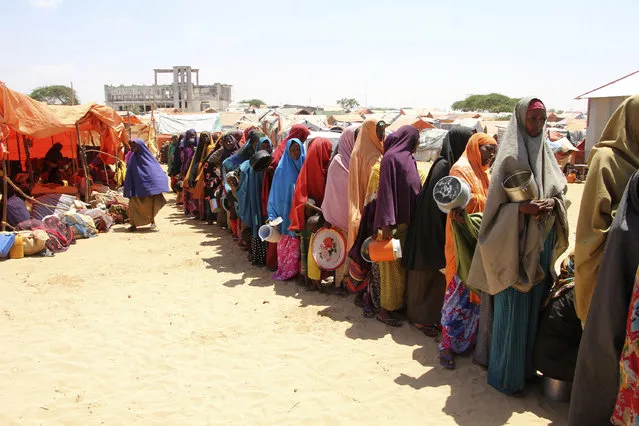
Displaced Somali women stand in a queue to receive food handouts in a camp, just outside of Mogadishu, in Somalia, Monday, March, 27, 2017. Somalia's drought is threatening 3 million lives, according to the U.N. In recent months, aid agencies have been scaling up their efforts but they say said more support is urgently needed to prevent the crisis from worsening. (Photo by Farah Abdi Warsameh/AP Photo)
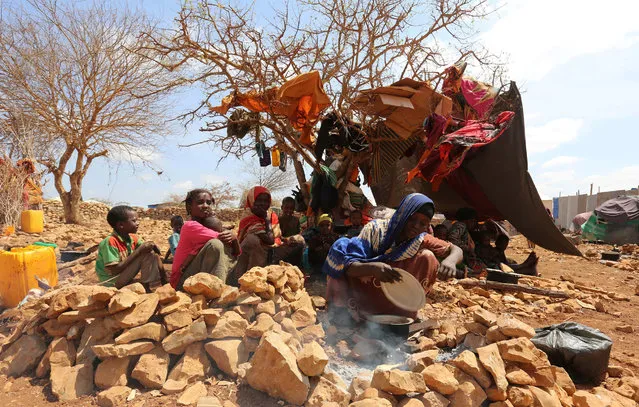
An internally displaced Somali woman prepares a meal outside her shelter after fleeing from drought stricken regions at a makeshift camp in Baidoa, west of Somalia's capital Mogadishu, March 26, 2017. (Photo by Feisal Omar/Reuters)
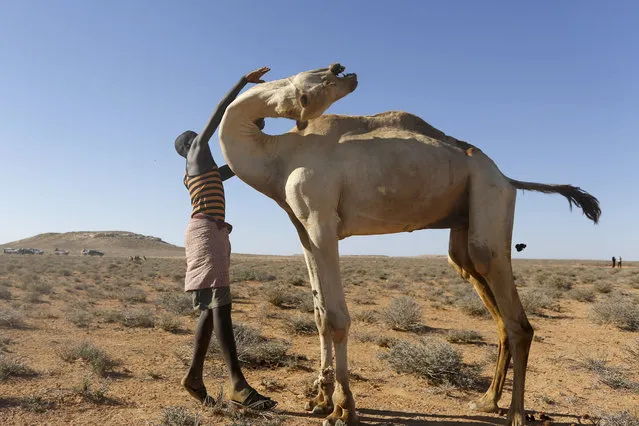
Ali Asair, who has left his family behind and traveled hundreds of kilometers in search for a pasture for his animals, attends to his camel in a pastoralists' settlement in the Bandarbeyla district in Somalia's semi-autonomous region of Puntland, Somalia, 24 March 2017. According to media reports, the United Nations says only 31 percent of 864 million US dollars appeal for a drought-hit Somalia is funded. The UN said the world is facing the largest humanitarian crisis since 1945, adding that more than 20 million people are facing the threat of famine in Somalia, Yemen, South Sudan and Nigeria and 1.4 million children could die from starvation this year. (Photo by Dai Kurokawa/EPA)
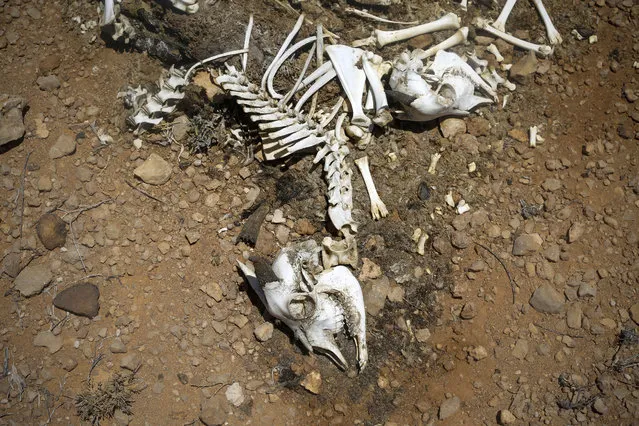
A carcass of an animal that died of a severe drought is seen near a pastoralists' settlement in Bandarbeyla district in Somalia's semi-autonomous region of Puntland, Somalia, 24 March 2017. (Photo by Dai Kurokawa/EPA)
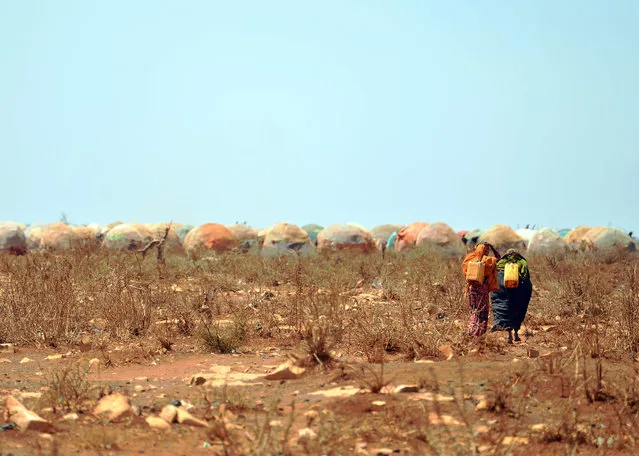
Women carrying jerrycans of water from a collection point set up by a UN aid agency walk on March 14, 2017 towards a makeshift camp on the outskirts of Baidoa, in the southwestern Bay region of Somalia, where thousands of internally displaced people arrive daily after they fled the parched countryside. The United Nations is warning of an unprecedented global crisis with famine already gripping parts of South Sudan and looming over Nigeria, Yemen and Somalia, threatening the lives of 20 million people. For Somalis, the memory of the 2011 famine which left a quarter of a million people dead is still fresh. (Photo by Tony Karumba/AFP Photo)
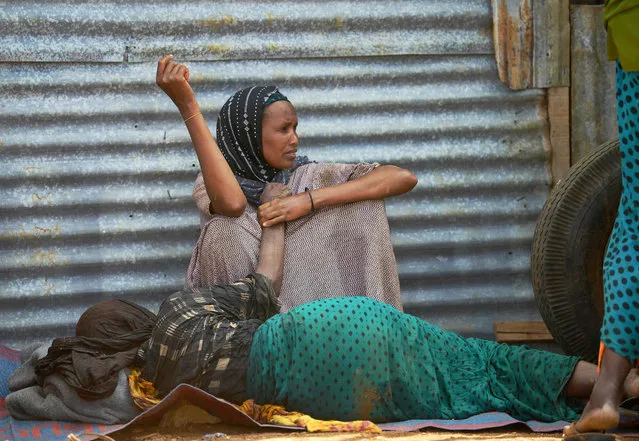
An elderly woman weakened by hunger lies on the ground as her daughter watches over her at a camp for the internally displaced on the outskirts of Baidoa town, the capital of Bay region of south-western Somalia where people escaping the impact drought from areas cut-off to emergency aid by al-Shabaab Islamists continue to arrive daily on March 15, 2017. (Photo by Tony Karumba/AFP Photo)
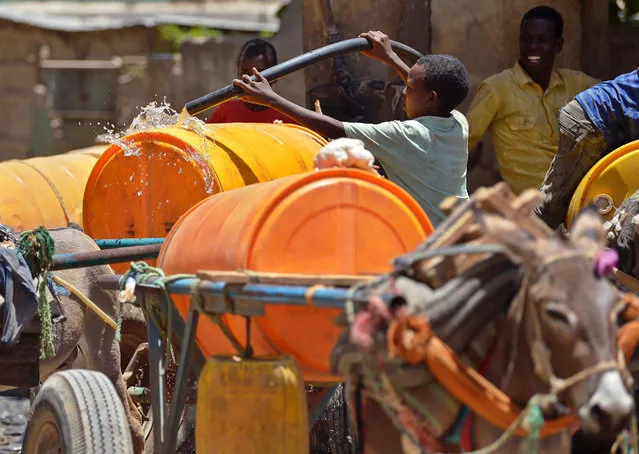
A young boy fills with water a drum loaded on a donkey-cart before selling it on March 15, 2017 in Baidoa, in the southwestern Bay region of Somalia, where the spread of cholera has claimed tens of lives of internally displaced people fleeing the parched countryside. (Photo by Tony Karumba/AFP Photo)
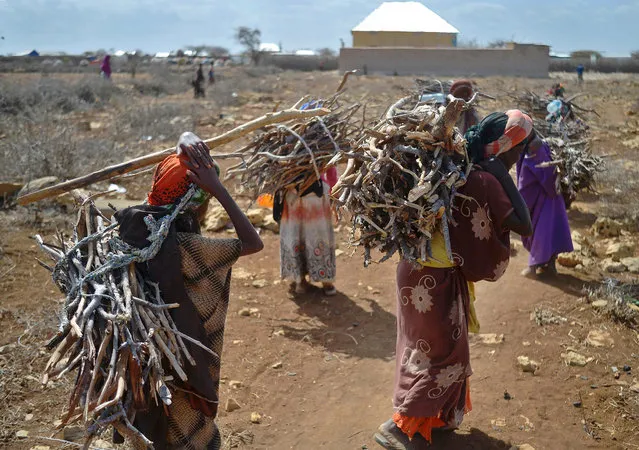
Women carry firewood on March 15, 2017 as they walk back to a makeshift camp on the outskirts of Baidoa, in the southwestern Bay region of Somalia, where thousands of internally displaced people arrive daily after they fleeing the parched countryside. (Photo by Tony Karumba/AFP Photo)
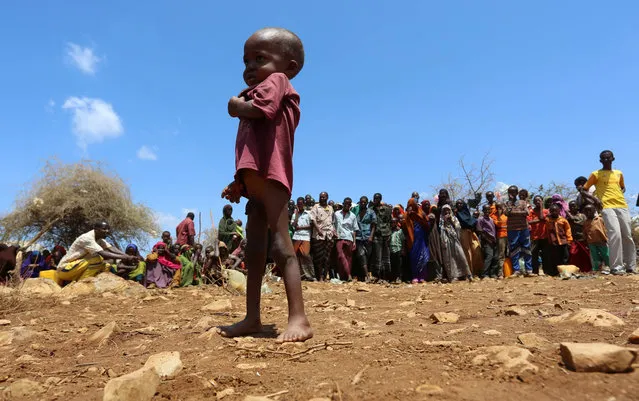
An internally displaced Somali child stands among other people who have fled from drought stricken regions at a makeshift camps in Baidoa, west of Somalia's capital Mogadishu, March 26, 2017. (Photo by Feisal Omar/Reuters)
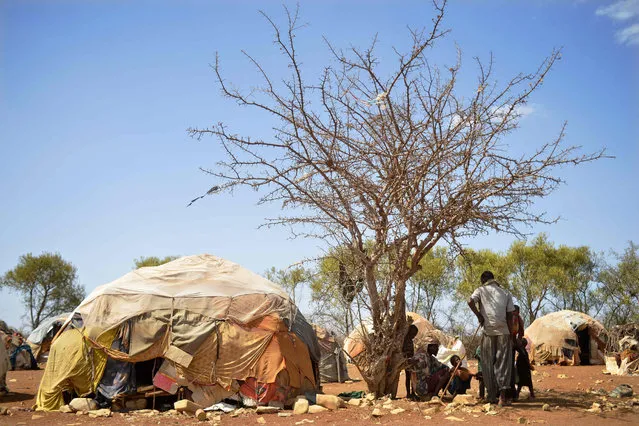
Internally displaced men and children shelter from the sweltering afternoon sun under a tree besides a hut on March 14, 2017 at a makeshift camp on the outskirts of Baidoa, in the southwestern Bay region of Somalia, where thousands of people arrive daily after they fled the parched countryside. (Photo by Tony Karumba/AFP Photo)
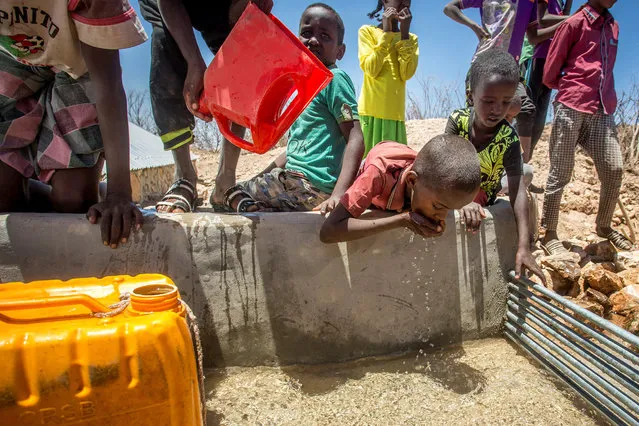
Children drink water delivered by a truck in the drought-stricken Baligubadle village near Hargeisa, the capital city of Somaliland, in this handout picture provided by The International Federation of Red Cross and Red Crescent Societies on March 15, 2017. (Photo by Reuters/The International Federation of Red Cross and Red Crescent Societies)
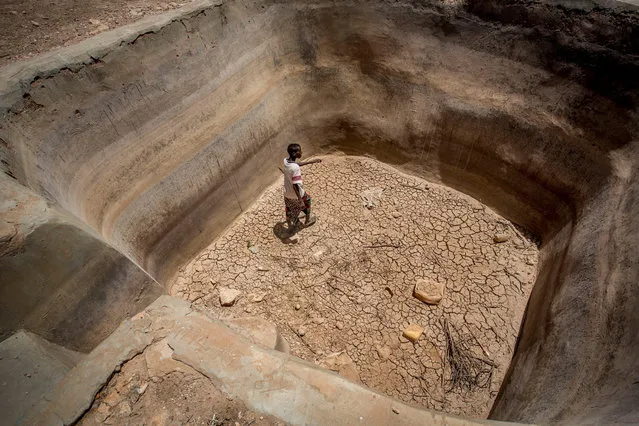
A man walks in a dry underground water pan in the drought-stricken Baligubadle village near Hargeisa, the capital city of Somaliland, in this handout picture provided by The International Federation of Red Cross and Red Crescent Societies on March 15, 2017. (Photo by Reuters/The International Federation of Red Cross and Red Crescent Societies)
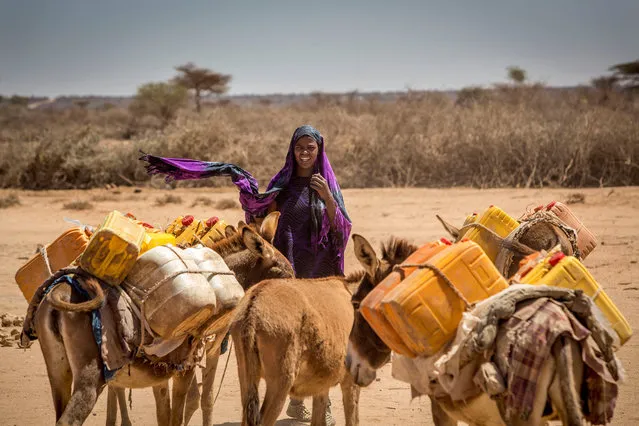
A woman leads her donkeys loaded with jerrycans in the drought-stricken Baligubadle village near Hargeisa, the capital city of Somaliland, in this handout picture provided by The International Federation of Red Cross and Red Crescent Societies on March 15, 2017. (Photo by Reuters/The International Federation of Red Cross and Red Crescent Societies)
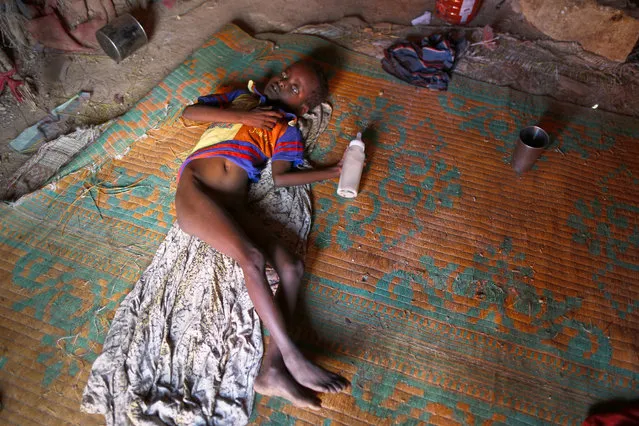
A photograph made available on 27 March 2017 shows a malnourished young Internally Displaced Person (IDP) with a mental disability laying inside his family's shelter in an IDP camp in the outskirts of Qardho in Somalia's semi-autonomous region of Puntland, Somalia, 26 March 2017. The food crisis caused by lack of rainfall in the region affects 5.6 million people in Ethiopia according to the Red Cross, which aims to raise 13.8 million US dollars to “provide food for tens of thousands of people, screen children for malnutrition, and improve access to health services and clean water”. East Africa has been suffering from a severe drought since 2015 due to the El Nino weather phenomenon. (Photo by Dai Kurokawa/EPA)
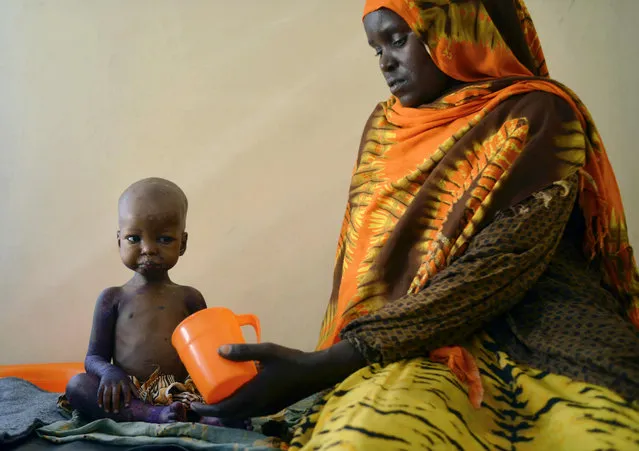
A malnourished child is fed a special formula by her mother at a regional hospital in Baidoa town, the capital of Bay region of south-western Somalia where severe cases of malnourishment and cholera are reffered by a UNICEF- funded health programme for children and adults displaced by drought on March 15, 2017. (Photo by Tony Karumba/AFP Photo)
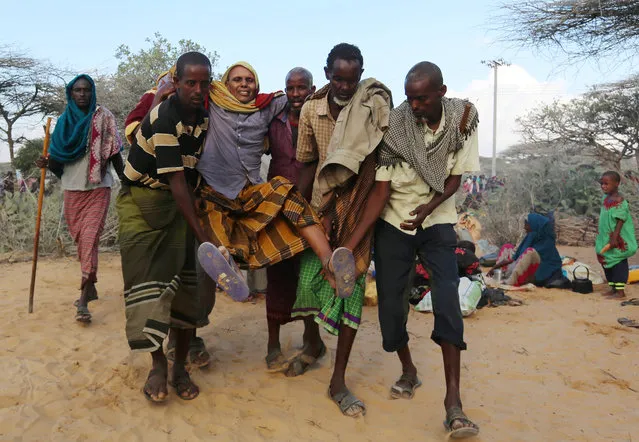
Internally displaced Somali people carry a man with a broken leg as they flee from drought stricken regions in Lower Shabelle region before entering makeshift camps in Mogadishu on March 17, 2017. (Photo by Feisal Omar/Reuters)
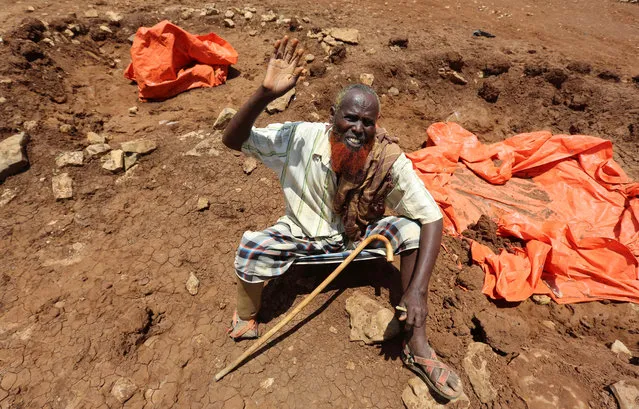
An internally displaced Somali man gestures after fleeing from drought stricken regions at makeshift camps in Baidoa, west of Somalia's capital Mogadishu, March 26, 2017. (Photo by Feisal Omar/Reuters)
28 Mar 2017 09:01:00,
post received
0 comments
